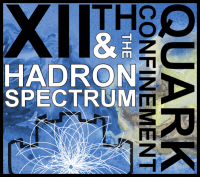Speaker
Description
Heavy quarks, i.e. charm and beauty, are produced primarily in the initial, hard partonic scatterings in hadronic collisions.
In pp collisions, their production is well described by perturbative QCD due to their large mass.
In heavy-ion collisions, heavy quarks propagate through and interact with the hot and dense QCD matter.
Therefore, measurements of heavy-flavour production provide relevant information on the early stage of the collisions and parton-medium interaction.
A strong suppression of heavy-flavour production has been observed at high $p_{\rm{T}}$ with respect to the cross
section measured in pp collisions and scaled by the number of nucleon-nucleon collisions.
Such suppression has not observed in p--A collisions which is expected absence of QGP.
Thus the suppression in Pb--Pb collisions is a result of final state effects related to the energy loss of heavy quarks.
In addition, a collectivity of heavy-flavour productions was found in azimuth in non-central heavy-ion collisions.
Those results indicate that heavy quarks strongly interact with the matter created by heavy-ion collisions.
In the Large Hadron Collider (LHC), open heavy-flavour productions in the heavy-ion collisions (Pb--Pb) has carried by measuring D mesons, leptons from semi-leptonic decay of heavy-flavours and jets which are original from heavy quarks. In this presentation, those results are shown and discussed with theoretical calculations to understand the properties of the QCD matter and heavy-flavour productions.
Summary
In this presentation, measurements of heavy-flavour productions in the relativistic heavy ion collisions in LHC are shown and discuss with theoretical calculations.




